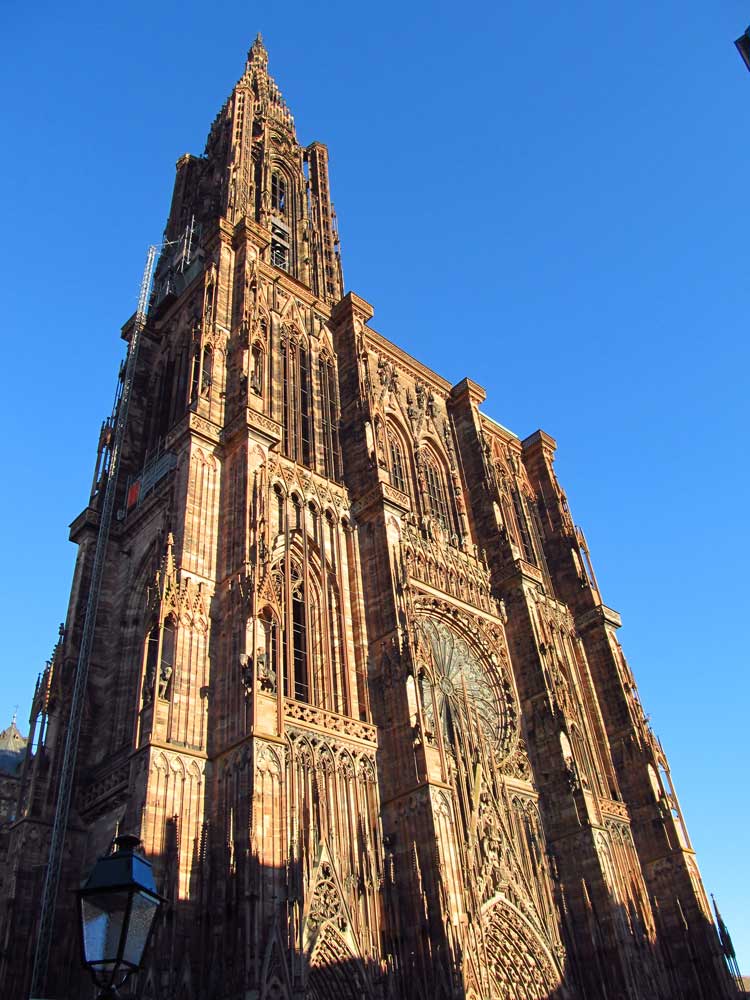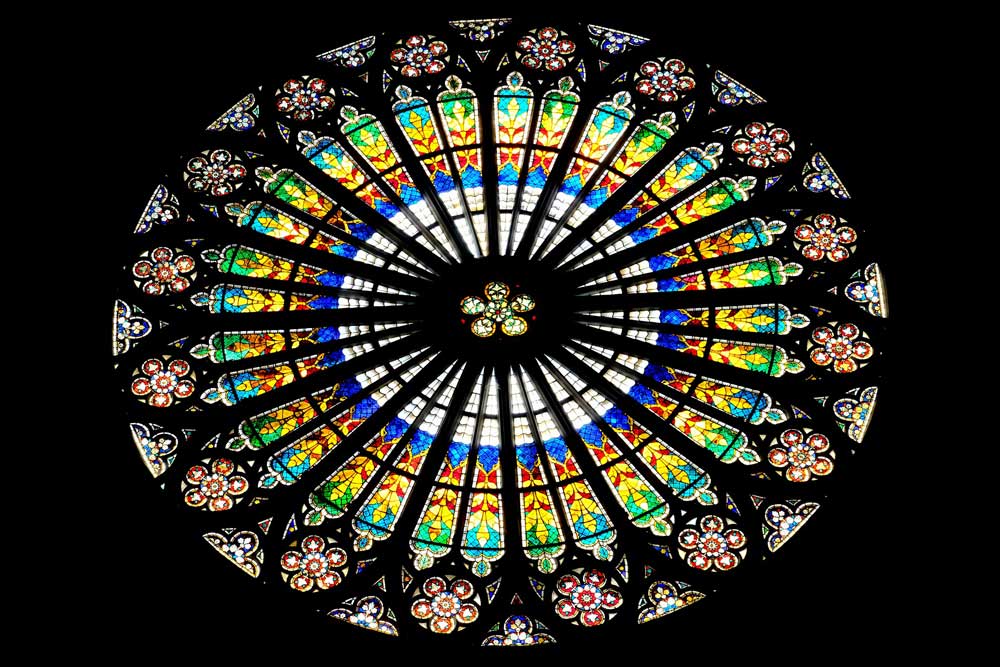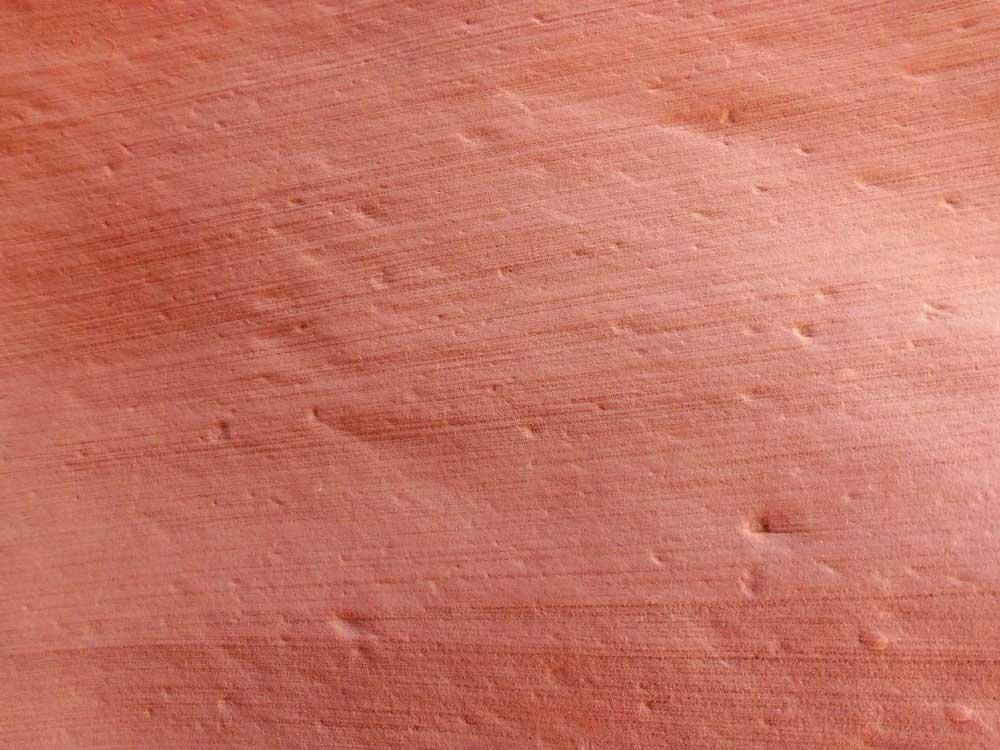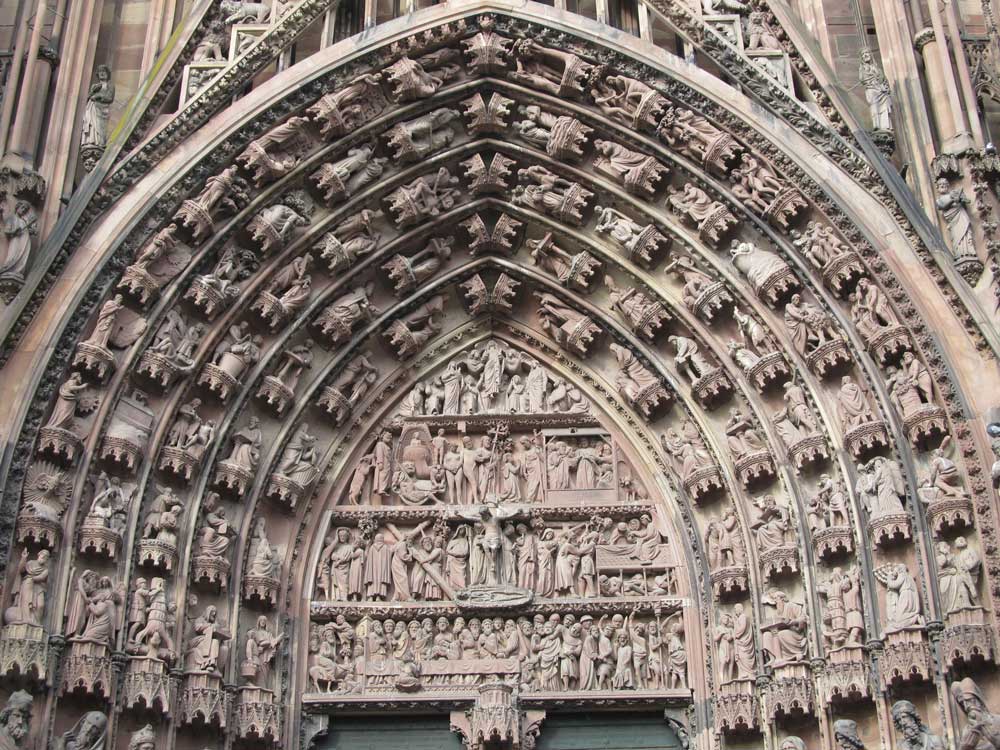Article by Gabriel Wetzer from Happy Strasbourg
Let's talk a bit about the Notre Dame de Strasbourg cathedral, the most beautiful in the world (in my perfectly objective opinion of a Strasbourg guy of course). And let's start with the basics: what is a cathedral? There are many cathedrals, but not that many in the end ... The word comes from Latin and it means here "the seat of the bishop". It is therefore a central church in a given geographical area, the one managed by the bishop in question. For that reason, they are usually only found in large cities, and Notre Dame de Strasbourg is the only cathedral in all of Alsace!

But let's skip the linguistic details, and let's talk about Mommy, because that's how we call her in Strasbourg, "Notre Dame" (Our Lady), "Mommy", it's the same in the end! She’s a mother to us all, she watches over us from her height of 142m, and she was the tallest human construction from 1647 until 1874! Not bad, is it? However, she had to wait some time to get the record because her spire was completed in 1439, after 424 years of hard work. The first stone of its foundations was laid in the year 1015, so we celebrated its millennium with great fanfare 6 years ago now. 18 years from now we will certainly be celebrating the 600 years since the end of its construction, but don't you wait that long to visit Strasbourg!
I'm not going to give you a long history of its construction or a detailed list of all the incredible facts about it, I would need hundreds if not thousands of chapters, I don't know how many books have been written on the topic, and you certainly don't have time to read it all. However, among the wonders it shelters, the millions of visitors it attracts each year can admire the pulpit of the great preacher Geiler of Kaysersberg, the famous astronomical clock repaired by Schwilgué in the 19th century, the Pillar of Angels, which represents in three dimensions the Last Judgment, the great organs restored by Silbermann in the 18th century, as well as the multiple stained glass windows from the 14th century, including the large rose window on the facade, a masterpiece by the architect Erwin von Steinbach. If you want to know more about these wonders, you will have to come and follow the Free Tours of Happy Strasbourg 😉
Today I'm just going to tell you about the stone used for its construction, but just a little because once again, it might take way too long to go into the details!

A stone that comes from… far away?
The stone the cathedral of Strasbourg is made up with comes from the neighbouring mountains: the Vosges. We call it the pink sandstone of the Vosges and we will talk about its specific colour a little later. Nowadays, an easy 30 minutes ride by car will take you to the Vosges. A few centuries ago, vehicles did not offer the same efficiency though. So the stone blocks had to be carted from the quarries with oxen and that took a lot of time. Legend has it that a Hungarian once arrived with an aurochs and was able to carry ten times more weight than the oxen could. The said aurochs would have died of fatigue in front of the cathedral, still under construction then. He died admiring the work he had made possible until then. If you come to Strasbourg I will tell you this legend in more detail, I promise!
As a little anecdote, long after the cathedral was finished, Louis XIV wanted to build new fortifications around Strasbourg. To do that, the local sandstone was still the best solution, so the King had the Bruche canal built in just a year: 20 kilometres to transport the stones faster and easier. You know, stones were needed, and the Sun King does not like to wait!
A material not easy to work with
Despite the size of the monument, its base material, sandstone, is a fairly fragile mineral, and above all, a very friable one! Basically, sandstone is compacted sand, as the name hints. You will understand immediately by running your hand over its grainy surface. Being very friable, it is also very sensitive to erosion, whether by wind or rain. By the way, the latter can cause an unfortunate chemical reaction that makes the stone's colour dark like ebony. For this reason, most of the thousands of statues that you can see on the cathedral are copies. The originals are kept in the “Musée de l’Œuvre Notre Dame” or in various warehouses to protect them.

Despite this relative fragility (it remains stone after all!), sandstone offers something quite distinct from other types of stone. Since it is very crumbly, sculpting it is a matter of finesse, you have to use the hammer and the chisel with delicacy, otherwise everything will break with a badly placed blow. But in the same sense, it allows for very precise achievements, offering the possibility of sculpting real lace! By the way, "stone lace" is the expression we use to define the facade of Notre Dame: admire its western massif in the purest flamboyant Gothic style!


A very special colour But let's go back to the colour of this particular sandstone. It comes from iron oxide, present in large proportions in the Vosges sandstone. As I said, we call it quite simply the pink sandstone of the Vosges. And its colour is very peculiar: I invite you to sit on a terrace on the cathedral square, to contemplate its facade changing colour as the hours and the seasons go by, depending on the weather and the sun light. If this colour is changing, it is also because there is a lot of quartz in sandstone, a crystal capable of breaking down light into all the shades of the rainbow. Mommy’s facade can change from brown to orange, red or pink, or even almost black grey in rainy weather. It's a sight that takes a while to admire, but it's worth the wait, trust me! And then, when you are installed on a terrace in the sun with a cold drink, it doesn't seem that long ... It so happens it is also the starting point of our Free Tours, so you won't miss it! There is so much to say about Mommy that you will have to come see us!